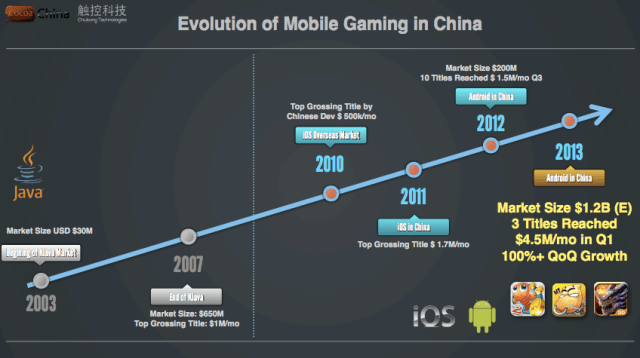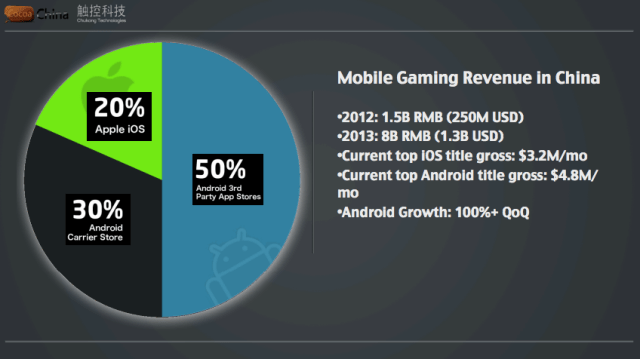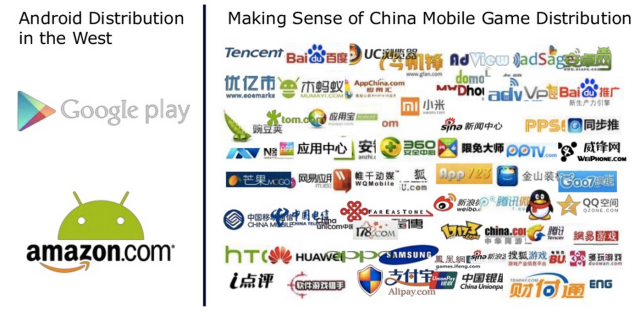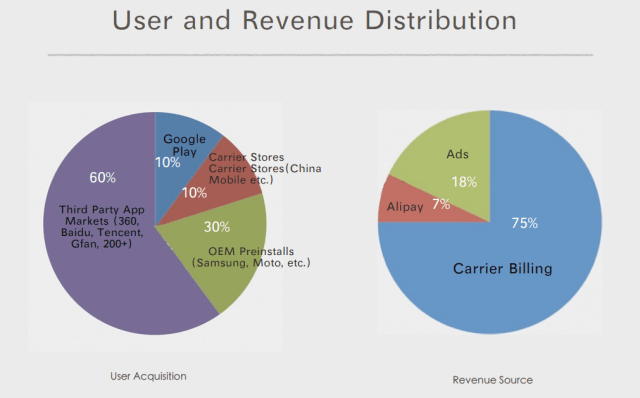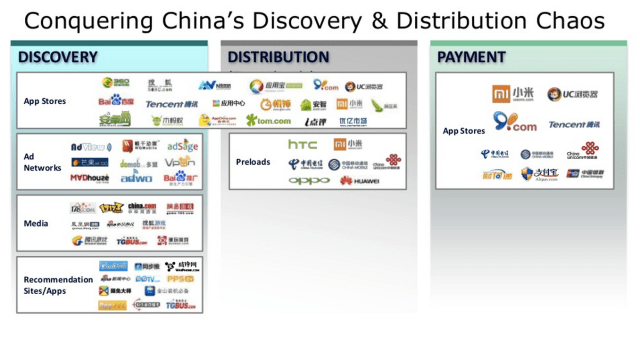Two years ago, while traveling in Beijing, the big surprise for me was how badly local mobile developers wanted to get U.S. customers.
They wanted out, not in.
Today the picture is starting to look very different. Why?
- The market is now huge: two months ago, mobile analytics company Flurry reported that China finally surpassed the U.S. in terms of active installed Android and iOS devices.
- Local payment options and restructured carrier billing choices with the big operators like China Mobile, China Unicom and China Telecom have made it easier to charge mobile app users. It’s also helped give Chinese consumers legal alternatives to acquiring fraudulent credit card data on Taobao, the eBay of China.
- The number of alternative Android app stores — while still overwhelming — is consolidating.
“Two years ago, a lot of people were getting downloads, but they weren’t making a lot of money,” said Henry Fong, the CEO of Yodo1, which helps foreign mobile game developers enter the Chinese market. “This changed in late 2012 when the big mobile operators kind of reset their carrier billing programs. Monetization on Android has gotten a lot better.”
That has meant that local app developers are starting to see their revenues per month soar. Beijing-based mobile game developer and publisher CocoaChina/Chukong said a few weeks ago that their flagship game Fishing Joy is now making $6.28 million per month, mostly from China.
“We fully expect that sometime in 2013 that there will be a $10 to 15 million-per-month game in China. This should be not ignored by the Western market,” said Lei Zhang, who is the U.S. general manager for CocoaChina.
CocoaChina estimates that the entire size of the Chinese app ecosystem will reach $1.2 billion this year (see below). They add that three games have now reached runrates of $4.5 million per month in the country this quarter.
It doesn’t mean that the Chinese market is a cakewalk though. The distribution channels and payment methods are completely different than in the U.S. market. There are more than 200 Android app stores as the standard store Google Play isn’t widely available in China.
Yodo1 shared this slide at the Game Developers’ Conference last week. You can see the craziness. Two stores in the West and about 200 in China.
The five or six that CocoaChina said were worth paying attention to are the Qihoo 360 app store, Wandoujia, 91 Mobile, UCWeb, Baidu and China Mobile’s app store. Below is CocoaChina’s breakdown of where their users come from. Only 10 percent of their users come from Google Play, while more than half come from all of the third-party alternative Android app stores. Then 10 percent on top of that come from carrier app stores like China Mobile’s.
Then on top of figuring out all of the Android app stores, the local social networks are also totally different. Instead of Facebook and Twitter, a developer might need to rely on Tencent’s QQ platform, Sina Weibo or Weixin. Yet another marketing channel to watch will be Tencent’s WeChat app, which is expected to take a cue from Japan’s Line and South Korea’s KakaoTalk messaging apps and come out with some kind of mobile gaming platform by the middle of this year.
The slide below from Yodo1 shows how complicated it is (again).
Unsurprisingly, companies like Yodo1 and Chukong/CocoaChina are positioning themselves to be local partners to foreign developers that want to enter China quickly.
Yodo1 emphasizes a “co-production” model instead of a pure publishing model. That means they have direct access to a mobile game’s code base and they actually change the look and feel of the game with localized graphics and music. For example, with the game Ski Safari, they added panda and Terra Cotta-warrior graphics and a zither to the game’s musical track. With that, they were able to attract 7 million users on iOS in three months and 1.2 million in one month on Android. They also bumped up the game’s daily revenues by about 220 times to about $7,800 on iOS and $7,500 on Android.
“If you don’t learn the market now, get that competition edge and that footprint in the market, you’ll be an outsider once the market becomes mature,” Fong said.
